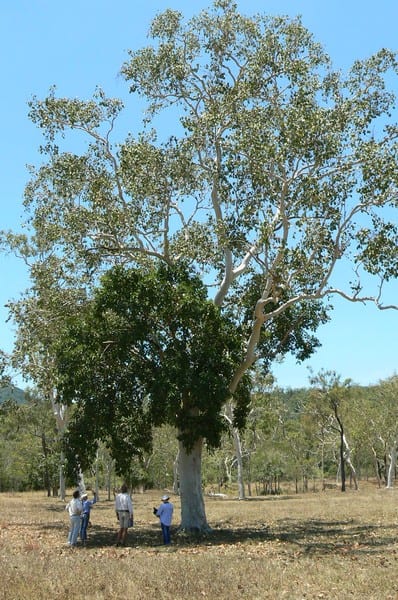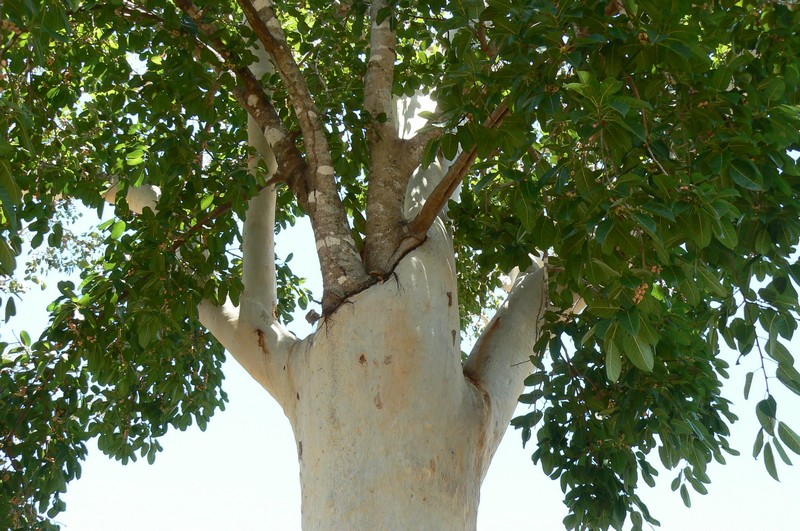White fig, banyan fig
Ficus virens, Fam. Moraceae






Medium to large tree with buttressed trunk, banyan with few aerial roots or strangler, semi deciduous or deciduous. Monoecious.
| Weed Category: | |
| Weed: | No |
| Form or habit: | Med tree, Large Tree |
| Family: | Moraceae |
| Leaf: | Simple Alternate Simple, alternate, entire, ovate to elliptic or ovate-lanceolate, 8-19 x 3.5-9cm. Stipules 0.5-1.5cm; petioles 2-7cm. More dry and papery to touch compared to other local figs. Leaves exhibit prominent pale lateral veins visible on both sides. |
| Flower conspicuous: | Inconspicuous |
| Flower colour: | |
| Flower description: | Flowers are enclosed within the fig itself and generally pollinated by specific wasps. |
| Fruit conspicuous: | Conspicuous |
| Fruit colour: |
Black, Brown, Purple, White, Pink, Red |
| Fruit: | Fleshy |
| Fruit description: | Globular figs 0.7-2cm in diameter. Pinkish brown or white with reddish spots ripening to to purple and sometimes black. September to July. |
| Habitat: | Beach scrub, gallery (riverine or riparian) forest, littoral rainforest, rainforest. |
| Distribution | Cape York to Richmond River in NSW, northern WA and NT. |
| Food source for: | Fruit attracts a range of birds, as well as the spectacled flying fox. |
| Toxicity: | No toxicity known |
| Origin: | Australia |
| Notes: | A useful tree for arresting stream bank erosion. |
| Information sources: | Melzer R. & Plumb J. (2007) Plants of Capricornia., Society for Growing Australian Plants. Mackay Branch. (1989). One hundred and one trees of Mackay. |